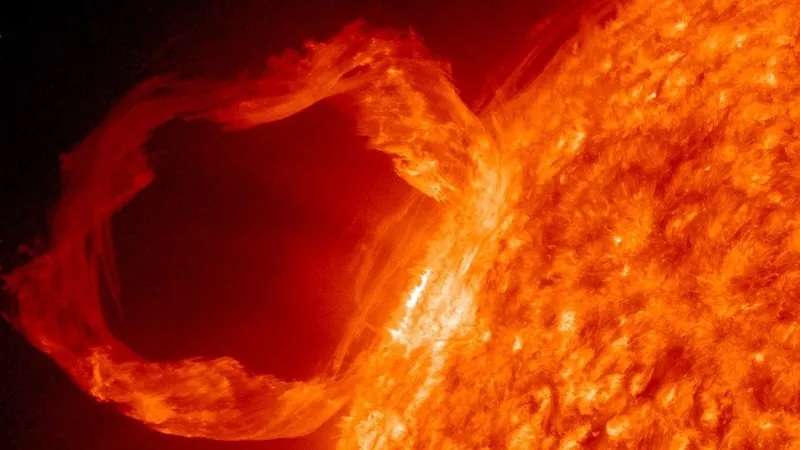
Unveiling Earth’s Most Powerful Solar Storm: A 14,300-Year-Old Mystery Solved
2025-05-17
Author: Wei Ling
A Groundbreaking Discovery in Solar Activity
In an astonishing revelation, researchers have identified the most intense solar storm ever recorded, dating back to 12,350 BC during the twilight of the last Ice Age. This monumental breakthrough reshapes our understanding of both cosmic events and their implications for radiocarbon dating.
The Power of The Past
Using an innovative chemistry-climate model called SOCOL:14C-Ex, Postdoctoral Researcher Kseniia Golubenko and Professor Ilya Usoskin from the University of Oulu, Finland, were able to unveil this extreme solar event. Their model allowed them to determine that this ancient storm was approximately 18% more potent than the previously strongest storm recorded in 775 AD.
"This ancient event eclipses the notorious 2005 particle storm by over 500 times in intensity, showcasing just how powerful solar activity can be," Dr. Golubenko commented.
A Closer Look at Historical Solar Events
This new discovery extends the timeline for solar activity, previously thought limited to the last 12,000 years, into the depths of glacial history. Notable solar events have also occurred during various periods, including around 994 AD and 663 BC.
What Makes Solar Particle Storms Unique?
Solar particle storms, though rare, unleash an avalanche of high-energy particles toward Earth. Unlike the infamous Carrington event of 1859, which lacked a solar particle storm, the 12350 BC incident presents a unique and extreme case, far removed from the stable climate of the Holocene epoch.
Revolutionizing Radiocarbon Dating
This solar storm’s implications go further than mere curiosity; it revolutionizes radiocarbon dating. The dramatic spikes in isotopes produced by such storms, termed Miyake events, serve as vital clues that can help date ancient artifacts with stunning precision. Usoskin notes that these findings can help validate timelines of Viking settlements in Newfoundland and Neolithic cultures in Greece.
Risks for Our Modern World
As we gain insights into these extreme solar phenomena, the implications for today’s technology are profound. Dr. Golubenko emphasized, "Understanding the scale of such ancient storms is essential for assessing the potential risks to modern infrastructure, including satellites and power grids." With this enlightening research, we are not just looking into the past but also preparing for the future, armed with the knowledge to protect against the heavens’ fury.



 Brasil (PT)
Brasil (PT)
 Canada (EN)
Canada (EN)
 Chile (ES)
Chile (ES)
 Česko (CS)
Česko (CS)
 대한민국 (KO)
대한민국 (KO)
 España (ES)
España (ES)
 France (FR)
France (FR)
 Hong Kong (EN)
Hong Kong (EN)
 Italia (IT)
Italia (IT)
 日本 (JA)
日本 (JA)
 Magyarország (HU)
Magyarország (HU)
 Norge (NO)
Norge (NO)
 Polska (PL)
Polska (PL)
 Schweiz (DE)
Schweiz (DE)
 Singapore (EN)
Singapore (EN)
 Sverige (SV)
Sverige (SV)
 Suomi (FI)
Suomi (FI)
 Türkiye (TR)
Türkiye (TR)
 الإمارات العربية المتحدة (AR)
الإمارات العربية المتحدة (AR)